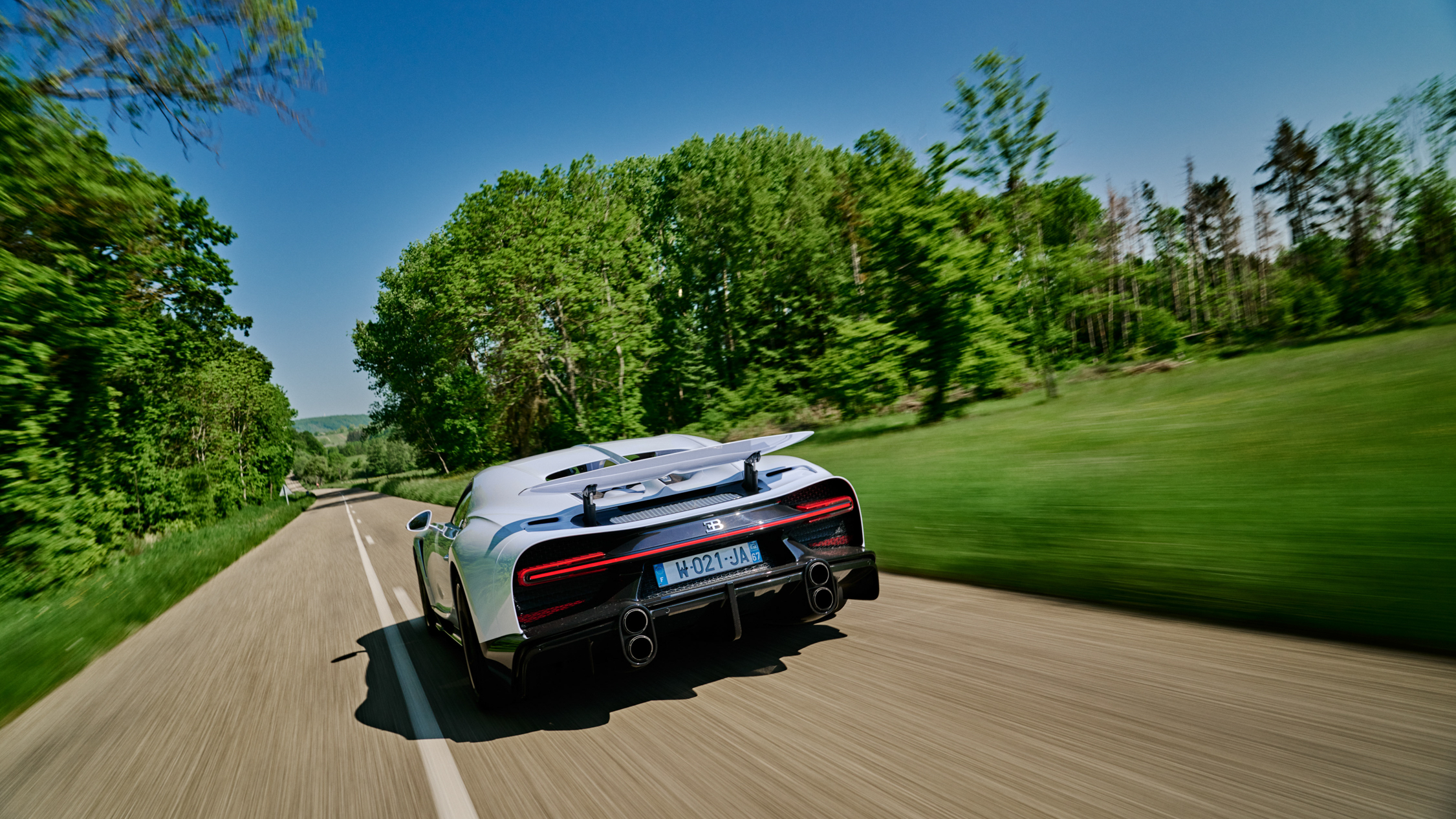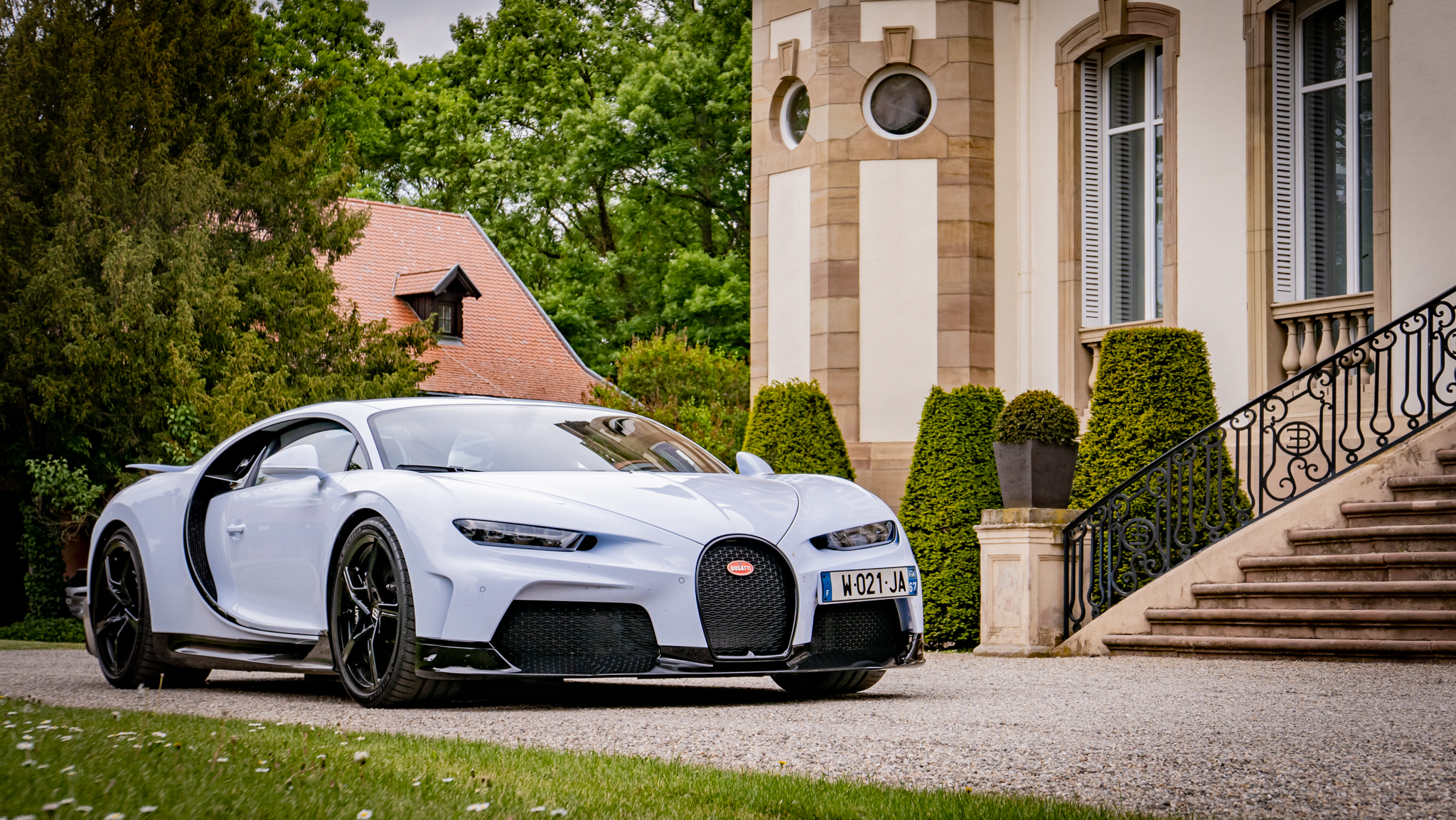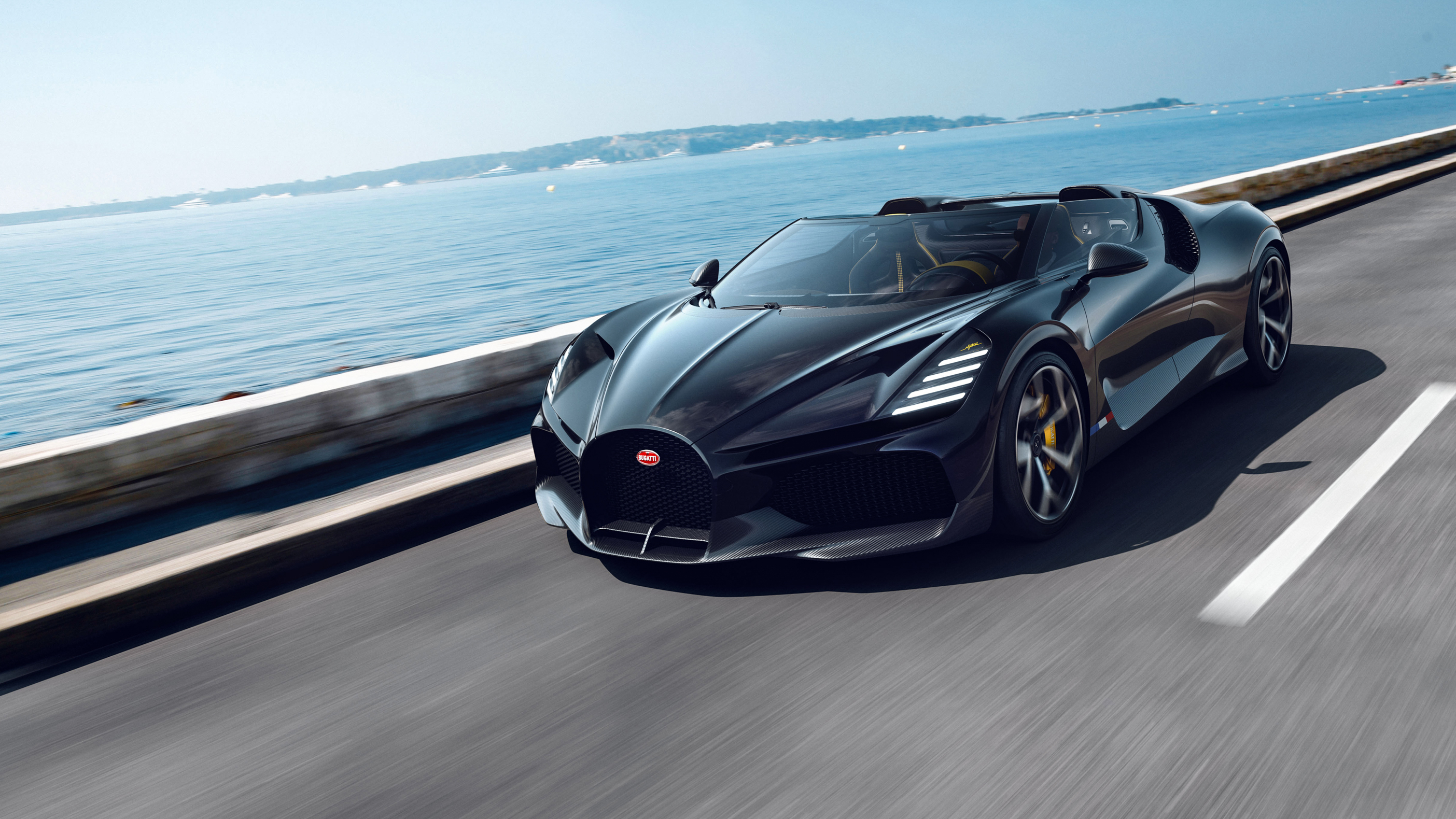Driving the Bugatti Chiron Super Sport is a fitting finale to internal combustion
The last of its breed goes out with a bang


Forty-five minutes behind the wheel of a Bugatti Chiron Super Sport is scarcely enough time to scratch the surface. But that’s all I had to work with, so I’ll give it my best shot.
I’m sure you know the headline numbers by now, but they are so preposterous that a quick recap is always worthwhile.
The eight-litre, 16-cylinder, quad-turbocharged engine of a Chiron Super Sport weighs more than a Caterham and produces 1,600 horsepower. It accelerates the car from rest to 62 mph (100km/h) in 2.4 seconds and to 186 mph (300km/h) in 12.1 seconds. The top speed is electronically limited to 273 mph, and at that speed the 100-litre fuel tank is emptied in nine minutes. At maximum power, the engine is gulping in 70,000 litres of air per minute, while cooling water is pumped through at a rate of almost 17 litres per second. Remove the limiter and it'll do 304 mph.
And yet, all of that is completely hidden when driving through a sleepy French town at 30 mph. That’s where my time with the Chiron Super Sport began, demonstrating its ability to work like a normal car, navigating junctions and roundabouts while its power steering, air conditioning and automatic gearbox fail to offer even a hint of what lies beneath.

To say the big Bugatti feels like a Volkswagen Golf would be to do it a disservice, but it feels entirely like a Bentley. The leather is as soft and supple, the controls have the same beautiful weight and tactility, the cabin is almost as quiet and the ride, while as firm as you’d expect from a near-two-tonne supercar, is perfectly comfortable. I’m sure you could drive the length of France without really noticing, just so long as you close your eyes at the petrol stations.
Other hypercars with over 1,000bhp like to shout about it at every opportunity. The Zenvo TSR-S, for example, shuns the Bugatti’s smooth semi-automatic for a trick sequential ‘box with brutal changes accompanied by a whip-crack from the exhaust. And two-foot flames for good measure.
Although it has a Porsche 911’s worth of extra power, the Chiron quietly rumbles along, fulfilling Bugatti’s original brief for its predecessor, the Veyron, that it must be a 250+mph car capable of driving to the opera.
Get all the latest news, reviews, deals and buying guides on gorgeous tech, home and active products from the T3 experts
The surreal nature of my Chiron Super Sport drive is magnified by having Bugatti test driver and 1988 Le Mans winner Andy Wallace in the passenger seat, giving directions like a driver instructor. Andy is here to comply with Bugatti’s insurance policy, and even former Top Gear Stig Ben Collins was given the same treatment, such are the difficulties of letting members of the media drive a £3m Chiron on the public road.
This is also, Bugatti points out, a car that has already been sold to a customer. Bugatti doesn’t have a press fleet of cars for journalists to try out; once retired from media duties, this one will be dismantled and rebuilt to the buyer’s specification. I’m also told the average buyer adds around €300,000 of optional extras to personalise their Chiron.

Back to the driving, and all it takes is a prod of the accelerator to switch from well-mannered Dr Jekyll to monstrous Mr Hyde. Take control of the eight-speed gearbox with paddles behind the steering wheel, or leave it to do its own thing. Either way, pushing the accelerator to the carpet is to unleash otherworldly performance. The Chiron catapults towards the horizon with the same intensity as the most potent electric cars, but where their assault is over just as quickly as it began, air resistance overcoming power, the Bugatti’s acceleration is seemingly endless.
Launching forwards on a wave of torque – 1600 newton metres, or 1,180 lb-ft of the stuff – the quiet rumble from earlier is replaced by a thunderstorm. It isn’t the delicate wail of a Ferrari or the sonorous roar of an Aston Martin. It doesn’t have the histrionics of a Lamborghini either, nor the muscle of a Corvette. The Bugatti is more mechanical; a powerful, industrial sound of induction, compression, explosion and emission. Rather than tuned for acoustic pleasure, it is simply the aural byproduct of the creation of enormous power. If this is a car to take you to the opera, its soundtrack is surely the cannon finale of Tchaikovsky’s 1812 Overture.

On that note, it is perhaps a fitting curtain call for the internally-combusted motorcar. Bugatti has just announced the Mistral, pictured above, a Chiron-based roadster limited to 99 examples (all sold, before you reach for your Amex) and to be the final outing of the company’s W16 engine.
As Mate Rimac takes the helm of the newly named Bugatti Rimac – and with former owner Volkswagen relinquishing control to Porsche and Mate's Croatian EV startup Rimac Automobili – the company’s next engine will be a hybrid. Eventually, just like everyone else, Bugatti will likely become a manufacturer of all-electric cars. They will undoubtedly be fast, and surely even quicker than the Chiron Super Sport, but they will be more closely related to the Rimac Nevera of today than the Veyron of the past.
Two decades after the aviation industry bid farewell to Concorde and supersonic commercial flight, the motoring industry will soon say goodbye to its own Concorde moment. The bloodline of the Veyron, Chiron and Mistral will end, replaced by something quieter and more environmentally friendly, but hopefully just as profound.
This article is part of The T3 Edit, a collaboration between T3 and Wallpaper* which explores the very best blends of design, craft, and technology. Wallpaper* magazine is the world’s leading authority on contemporary design and The T3 Edit is your essential guide to what’s new and what’s next.
Alistair is a freelance automotive and technology journalist. He has bylines on esteemed sites such as the BBC, Forbes, TechRadar, and of best of all, T3, where he covers topics ranging from classic cars and men's lifestyle, to smart home technology, phones, electric cars, autonomy, Swiss watches, and much more besides. He is an experienced journalist, writing news, features, interviews and product reviews. If that didn't make him busy enough, he is also the co-host of the AutoChat podcast.

